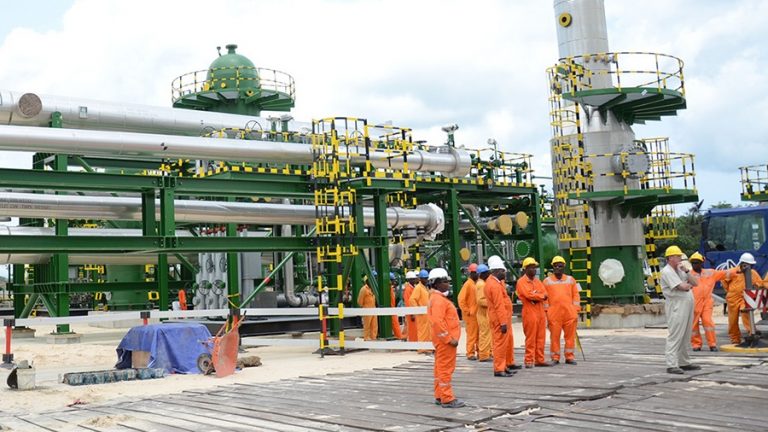
The Nigerian National Petroleum Company Limited (NNPC Ltd) has announced that the Port Harcourt Refining Company (PHRC) will undergo yet another shutdown — this time for “scheduled maintenance and sustainability assessment” starting May 24, 2025.
In a statement released Saturday by Chief Corporate Communications Officer, Femi Soneye, the NNPC explained the shutdown as part of its broader plan to ensure long-term reliability of the facility.
“We are working closely with all relevant stakeholders, including the Nigerian Midstream and Downstream Petroleum Regulatory Authority (NMDPRA), to ensure the maintenance and assessment activities are carried out efficiently and transparently,” the statement read.
Register for Tekedia Mini-MBA edition 19 (Feb 9 – May 2, 2026): big discounts for early bird.
Tekedia AI in Business Masterclass opens registrations.
Join Tekedia Capital Syndicate and co-invest in great global startups.
Register for Tekedia AI Lab: From Technical Design to Deployment (next edition begins Jan 24 2026).
“NNPC Ltd remains steadfast in its commitment to delivering sustainable energy security.”
However, the phrase “sustainable energy security” is beginning to ring hollow for Nigerians who have seen years of similar pledges lead to dead ends.
A Refinery That Produces No Fuel
The Port Harcourt refinery — comprising the older 60,000 bpd and newer 150,000 bpd units — was supposed to be a crown jewel in Nigeria’s bid to revive local refining. In August 2021, the Federal Executive Council approved a sweeping rehabilitation plan across four government-owned refineries: Port Harcourt (210,000 bpd), Warri (125,000 bpd), and Kaduna (110,000 bpd), giving a combined nameplate capacity of 445,000 barrels per day — the basis for the crude intervention stock allocated to the NNPC.
The cost was staggering:
- $1.48 billion for Port Harcourt
- $897.7 million for Warri
- $586.9 million for Kaduna
That’s a total of nearly $3 billion, in a country plagued by budget deficits, currency instability, and widespread poverty. Because the federal government couldn’t cough up the full sum at once, it granted the NNPC leeway, just nine days before the Petroleum Industry Act (PIA) was signed into law on August 21, 2021, to source funds externally.
NNPC structured a series of forward-sale agreements, pledging Nigeria’s future crude oil output in exchange for immediate cash from multilateral development banks and oil trading companies. These traders were granted preferential creditor status — meaning repayment was prioritized, regardless of Nigeria’s domestic needs.
“$1.04 billion came from a multilateral development bank, while $450 million came from a trader that has been collecting 67,000 barrels per day as repayment for a few years,” energy expert Kelvin Emmanuel said.
“The crude that should have been sold to earn FX for stabilizing the naira and funding the budget deficit has been swept down the drain. And the EFCC is quiet — but when it’s yahoo boys, you’ll see their erection.”
The NNPC has never denied these arrangements. The company once described the forward sale as a creative financing model. But nearly four years later, the refinery is still yet to produce any refined fuel for the Nigerian market — only official statements, ribbon-cutting ceremonies, and now, recurring shutdowns.
A Pattern of Dysfunction and Secrecy
The PHRC reportedly resumed operations briefly in late 2024 after years of inactivity, a milestone celebrated by government officials who framed it as a turning point for local refining. But just weeks later, in December, the refinery was again shut down — quietly. No official reason was provided at the time, and the public was left to guess whether the plant had ever truly come online.
Now, with this new shutdown announced as “planned maintenance,” analysts are questioning the logic of spending billions on a facility that has yet to show functional output. The opacity surrounding the true status of the refinery’s performance only deepens suspicions.
Despite the enormous cost of refinery rehabilitation, Nigeria still relies largely on imported fuel. This continues to drain foreign reserves and deepen inflationary pressures, with petrol prices frequently adjusted upward since the removal of the fuel subsidy in 2023.
While NNPC insists that the latest shutdown is routine, the optics are damning. The refinery’s inability to produce despite billions of dollars pumped into rehabilitation has sparked criticism, with many believing that it’s just another plot to embezzle public funds.



